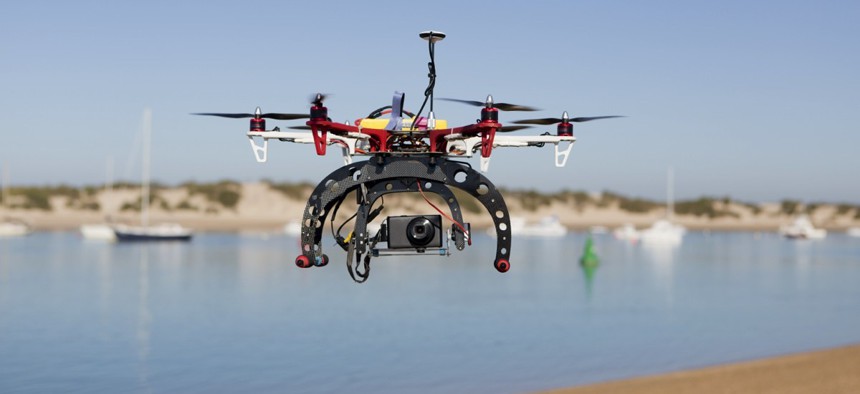In Drone Debate, States Will Have to Sort Out Data Collection Policies

Jarp2 / Shutterstock.com
During a NASCIO panel discussion on unmanned aerial vehicles, privacy issues were a top concern.
ALEXANDRIA, Va. — It’s the data, not the drones. As states consider how to use and regulate unmanned aerial vehicles, some of the thorniest issues surround what information the aircraft can gather and how this data gets handled and used once it is recorded.
That was one of the points raised on Tuesday afternoon at the 2015 National Association of State Chief Information Officers mid-year conference, during a discussion about aerial drones.
The discussion also touched on the money state agencies could save if they used drones in place of conventional aircraft, such as helicopters. And some panel and audience members voiced concerns that fear was overshadowing facts during conversations about drone policy.
“The crux of this issue is about collecting people’s private data,” said Washington state’s chief information officer, Michael Cockrill, who moderated the talk.
He emphasized that while the Federal Aviation Administration would provide regulations on flight-safety issues, such as acceptable altitudes, many tough questions about allowable uses for drone aircraft, and the data they record, will be left to states.
“What they’re not going to do is say you can’t use this technology for information gathering, or you have to do data minimization when you take video,” he said, referring to the FAA. “All of that is policy stuff that we at the state level are going to have to deal with.”
Cockrill posed a theoretical scenario where a state agency hires a contractor to obtain aerial imagery of forestland using drone aircraft. But in the process of gathering the images, the drones also capture license plate numbers, illegal marijuana grow operations and people unlawfully using trails. The agency then receives a public disclosure request for the video.
“What responsibility do I have, and what issues do I need to deal with?” he asked.
Andrew Koneschusky, a consultant who works with The Association for Unmanned Vehicle Systems International, an industry group, was also on the panel.
“The privacy issues are certainly always in the forefront, and important, but also important are the applications of this technology,” he said.
Among the examples he offered were using drones to survey infrastructure, wildlife and vegetation, as well as photographing accident scenes. A local fire department in Massachusetts used drone aircraft to assess storm damage last winter. And the aircraft have also been used in Hawaii to look out for brush fires.
In some instances drones can provide a cheaper alternative to helicopter flights, according to Koneschusky.
“The cost savings of the technology is a huge selling point for public entities,” he said.
Koneschusky questioned the trajectory of some drone policymaking. “It’s a challenge for the industry, it’s a challenge for the technology, when sensationalism and hysteria is kind of guiding the legislative and regulatory process, as opposed to [rationality] and reason,” he said.
Cockrill pointed out that about three dozen states were either considering, or had passed, drone legislation.
“What we’re seeing here is the American public, kind of, drawing a line in the sand,” he said, "and saying ‘drones is it, this is the issue that we’re going to sit and fight about, we’ve been ignoring the fact that there are pole cameras [monitoring] traffic and that there’s satellite surveillance and that the government and private industry collects information about us.’”
“Right now, this is the issue,” Cockrill added. “And it doesn’t really have that much to do with drones.”
NEXT STORY: ‘It Takes a While to Educate Finance and Budget People’ on State IT Investments






